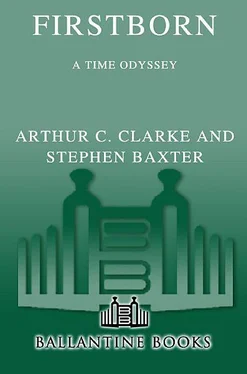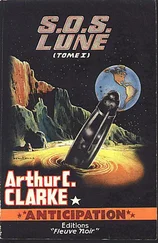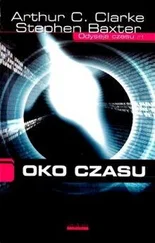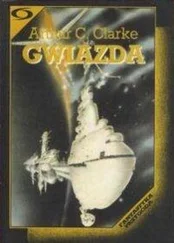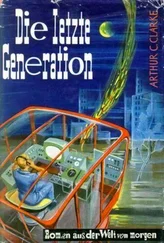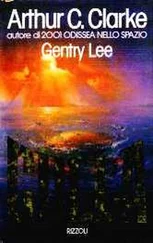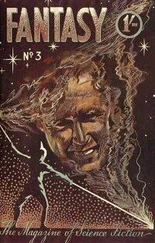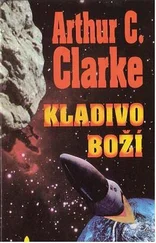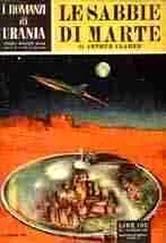Abdi said, “Well, we’re seeing it all today…”
As the train left the man-ape troop behind, Bisesa’s phone beeped gently. She took it from her pocket, watched curiously by the others.
“Good morning, Bisesa.”
“So you’re talking to me now.”
“I have some bad news, and good news.”
She considered that. “Bad news first.”
“I have been analyzing the astronomical data collected by Ab -
dikadir and his predecessors at Babylon. Incidentally I would ap-preciate the chance to study the sky myself.”
“And?”
“This universe is dying.”
She gazed out at the dusty plain, the rising sun, the capering man-apes by the rail track. “And the good news?”
“I have a call. From Mars, Wells Station. It’s for you,” it added laconically.
September 2069
At the Martian north pole, in the unending night of winter, time wore away slowly. Myra read, cooked, cleaned, worked her way through the station’s library of virtuals, and downloaded movies from Earth.
And she explored Wells Station.
There were in fact seven pie-on-stilts modules. Each of them was a roomy space divided by a honeycomb floor, built around a central axial cylinder. They had all been landed by rocket and parachute, folding up around their cores, then towed into place by a rover and inflated, the internal honeycomb flooring folded down.
All this was powered by a big nuclear reactor, cooled by Martian carbon dioxide and buried in the ice a kilometer away, its waste heat slowly digging out a cavern.
She’d been brought in through Can Six, the EVA unit, and Five, science and medical, through the disused Three, to Two, the galley cum sleeping area everybody just called “the house.” Can Four, the hub of the base, was a garden area, with trays of green plants growing under racks of fluorescents. Can Seven contained the central life-support system. Here Hanse proudly showed her his bioreactor, a big translucent tire-shaped tube containing a greenish, sludgy fluid, where blue-green algae, spirula plantensis, busily produced oxygen. And she was shown a water extraction plant; grimy Martian ice was melted and pumped through a series of filters to remove the dust that could comprise as much as forty percent of its volume.
Cans One and Three were sleeping quarters, roomy enough for a crew of ten. Both these modules had been abandoned by the crew, but there were some neat bits of equipment. Everything was inflatable, the bed, the chairs, with partition walls filled with Mars-ice water to provide some soundproofing. And there were biolumines-cent light panels that you could just peel off the wall and fold up.
Myra took some of these away, to brighten up her cave in the ice.
Under the panels the design schemes of the modules were exposed: where Two was a city landscape, Five mountains and Six the sea, Can One was a pine forest and Three a prairie. With a bit of experimentation she found you could animate these virtual landscapes. But these fancy features had evidently been quickly abandoned, as the crew had moved into “the house,” Can Two, where they lived together in the round.
Yuri grinned about this. “They spent a lot of money on this place,” he said. “Various Earth governments and organizations, in the days after the sunstorm when money flowed into space. Some kind of spasm of guilt, I guess. They knew this is an extreme environment. So they tried to make it as much like Earth as possible. You can be an ‘internal tourist.’ That’s what they told me in training. Ha!”
“It didn’t work?”
“Look, you need a few pictures of your family, and some blue-green paintwork to soothe the eyes — although remind me to show you Mars through a wavelength-shift filter sometime; there are colors here, deep reds, we don’t even have names for. But all these pictures of places that I’ve never been to, put up by city types who’ve probably never been there either — nah. You can keep it.”
She thought there was a pattern emerging here, spanning Lowell and now Wells Station, expensive facilities misconceived on Earth, and now half-abandoned by the Spacer generations who had to use them.
But Myra suspected there was something deeper about the way the crew shared that partition-free space in Can Two, living in the round. A few brief queries to the station’s AI brought up images of roundhouses, Iron Age structures that had once been common across Europe and Britain: big structures, cones of wood built around a central pole, with a bare circular floor and no internal walls. Here at the pole of Mars, all unconsciously, the inhabitants of Wells Station had abandoned the urban prejudices of the base architects and had reverted to much older ways of living. She found that somehow pleasing.
Of course that seven-module structure did serve one clear purpose, which was to do with the psychology of confinement. There were always at least two ways to get from any point in the station to any other. So if Ellie felt like strangling Yuri, say, there were ways for her to avoid bumping into him until she’d got those feelings under control. People locked up together like this, kept in the dark for a full Earth year at a time and unable even to step out the door, were always going to turn on each other. All you could do was engineer the environment to defuse the tensions.
Gradually Myra found herself work to do.
There were always chores in the garden, in Can Four, tending the plants, the rice and spinach and potatoes and peas, and cleaning out the gear that supported the hydroponic beds. Grendel Speth happily accepted Myra’s untrained help. There was even a stand of bamboo. Previous crew members had found ways to eat the fast-growing stuff, and they had made things with it; a wind-chime mobile of scrimshaw-like carvings was suspended from one corner of the Can. The garden only provided a few percent of the base’s food supply, and if you were strictly logical about it, it would have been better to use this space and power to store more dried food from Lowell. But Myra found tending these familiar living things profoundly satisfying, which of course was its true purpose.
No matter how she kept herself busy she was always drawn back to the Pit.
That, after all, was the center of the mystery here; that was the place she had lost her mother. The trouble was she needed specialist help to get down there, and the station crew were busy with their own projects.
It took weeks before she inveigled Hanse Critchfield into suiting her up and taking her down into the deep interior of the ice cap, and into the Pit once more.
Ellie and Myra moved uncomfortably around the Pit. They were like two huge green pupae, Myra thought, bounding around these roughly melted chambers under the harsh light of the floods.
Ellie von Devender tolerated her presence, but barely. Busy, driven, full of a sense of herself and the importance of her work, Ellie wasn’t the type to make space for nursemaiding. She was prepared to talk about her work, however, if Myra was able to ask intelligent questions.
Ellie had set up a kind of suite of sensors around the Eye, some in the Eye chamber itself and others in bays she had had melted into the Martian ice. “High-energy particle detectors. Radiation sensors.
A neutrino detection tank.” This was a chamber blown into the ice, full of liquid carbon dioxide.
Ellie had active ways to probe the Eye too. She had set up an array of lasers and small particle guns, trained on the Eye like the rifles of a firing squad. These could mimic the Eye’s own leakage of radiation and particles — and it was through manipulating this input to the Eye that Ellie had, remarkably, been able to send signals to Bisesa’s mobile phone, abandoned in another world.
Читать дальше
